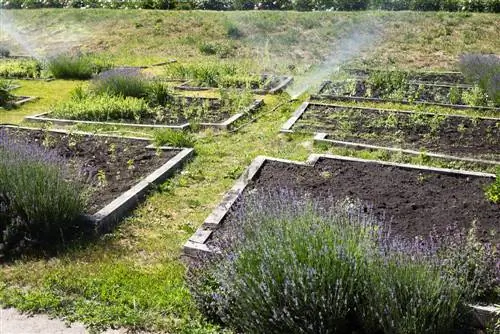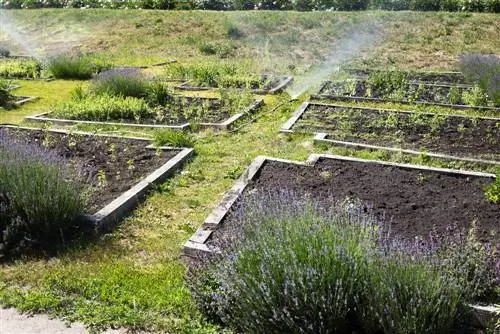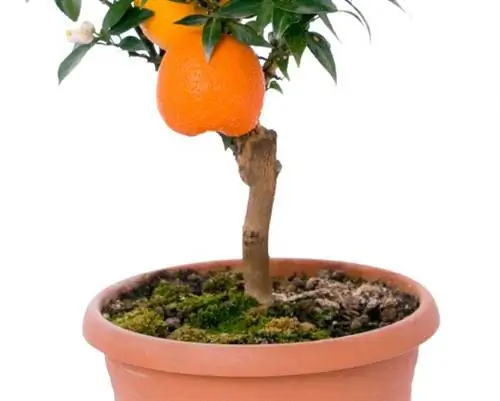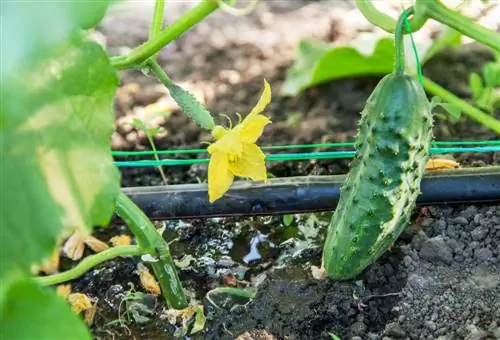- Author admin [email protected].
- Public 2023-12-16 16:46.
- Last modified 2025-06-01 06:02.
An automatic irrigation system saves you a lot of work and time, and on hot days you no longer have to worry about whether your vegetable plants might be thirsty. Instead, they are continuously supplied with the valuable liquid and you can go about your work with peace of mind.

How do I build an irrigation system for the garden myself?
To build an irrigation system in your garden, you will need a rain barrel, garden hoses and, if necessary, a pump. Lay out the hoses to optimally water the plants, connect them, perforate the hoses and start the system.
Drip irrigation for the garden - without a pump
This simple form of drip irrigation works without any electricity or external water connection and is particularly suitable for vegetable beds and perennial borders. All you need is a rain barrel with a capacity of at least 1500 liters and various garden hoses that can be coupled together. And this is how you install the system:
- Place the rain barrel(s) on a platform about 50 to 100 centimeters high.
- Lay out the garden hoses in such a way that they can ensure optimal watering.
- Review your plan and correct the situation if necessary.
- The water should always be able to escape directly from the roots.
- Couple the hoses together and close the end piece with a plug.
- Connect one or more hoses to the rain barrel(s).
- Perforate the hoses where water should come out.
- Get the system working.
Then you just have to make sure that the rain barrel(s) is refilled regularly.
Irrigation system with electricity and water connection
If you have an external power and/or water connection in the garden, you can perfect the irrigation system described above with a submersible pump or move the water supply straight to the house connection. In this way, you can also install a irrigation system for the lawn by connecting various irrigation elements (such as square, pop-up or surface sprinklers) using hoses and connecting them to a tap. However, this should have a pressure of at least 0.5 bar for automatic irrigation to work. Incidentally, you can install irrigation systems both above and below ground, but they are not suitable for vegetable or perennial beds: Here, irrigation should take place directly at the roots and not via the leaves, otherwise there is a risk of fungal diseases.
Tip
A garden fountain can be useful for cost-effective irrigation. However, you cannot drill this yourself; specialists usually have to get to work.






